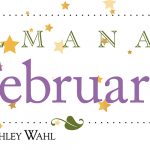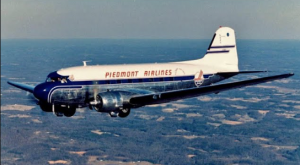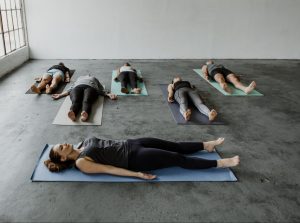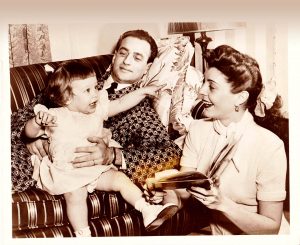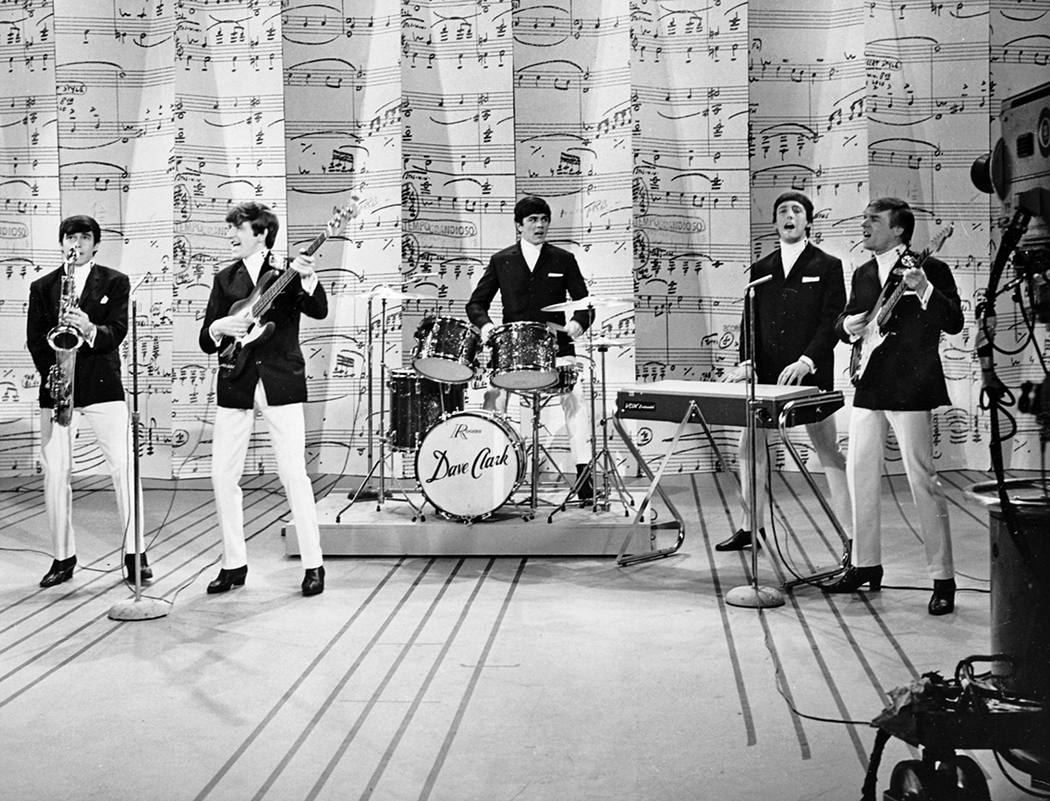
My Rubber Soul
By Jim Dodson
It was a moment that would change America forever. A cute girl named Trudy McGivern in Miss Esther Christianson’s Sunday School class leaned over, bit her lower lip and whispered excitedly: “Are you going to watch them?”
She clearly wasn’t paying attention to Miss Esther’s Bible story. The date was February 9, 1964, a cold and rainy Sunday morning in Greensboro. Exactly one week before, on Groundhog’s Day, I turned 11. Cute girls were suddenly of great interest to me, Trudy in particular.
“Who do you mean?” I whispered back.
“The Beatles, silly . . .” she said, weirdly blushing. “Haven’t you heard? They’re on the Ed Sullivan Show tonight.”
I remember wondering why just saying “the Beatles” could make Trudy McGivern blush. I’d heard of the Beatles, of course, had just read about how “Beatlemania” was sweeping Great Britain and soon headed to America. A couple of their hit songs — “I Want to Hold Your Hand” and “She Loves You” — had zoomed to the top of the pop music charts and were suddenly all over my favorite radio station in town. I liked both songs, though they certainly wouldn’t make me blush.
I liked the the Ed Sullivan Show, too, which I’d watched faithfully on our black and white Philco TV along with Walter Cronkite’s popular history documentary show, The Twentieth Century, for years. Sunday night, in fact, was America’s best night for TV, or at least my favorite, probably because it was the only night of the week I was permitted to watch our new RCA Colortrak TV past my usual 9 p.m. bedtime. Bonanza and Walt Disney’s Wonderful World of Color never looked so good.
Admittedly, I was mildly intrigued to hear that the Beatles were going to appear live on TV that very evening, but frankly, still in the clouds from an even bigger event earlier that week. After receiving a new Stella Concertmaster guitar for my birthday on Groundhog’s Day, my father arranged for two friends and me to go backstage and meet Peter, Paul and Mary, America’s greatest folk singing trio, after their concert at the Greensboro Coliseum. As it worked out, Mary Travers vanished quickly, but Paul Stookey and Peter Yarrow stuck around to chat with a cluster of wide-eyed kids and even allowed me to briefly play one of Paul’s guitars. He was amused when I strummed the chords of “Puff, the Magic Dragon,” their own hit song on the charts that faraway winter half a century ago. He then took the guitar and played the song leaving us in silent awe. Peter, Paul and Mary had my heart.
So the Beatles, as you might imagine, weren’t the top of my chart. Even so, out of simple curiosity, I plunked down cross-legged in front of our TV set at 8 p.m. that dreary February night and watched the Beatles impressively perform three different songs on the show amid orgiastic screams from hundreds of teenage girls packed into the CBS studio from which the show was broadcast. They were weeping and climbing out of the seats, pulling at their hair and even attempting to climb over balcony railings just to get at the “Fab Four,” making Trudy McGivern’s blush look like child’s play.
“The thing is,” John Lennon reflected on Beatlemania some years later, “in America, it just seemed ridiculous — I mean, the idea of having a hit record over there. It was just something you could never do.” But somehow, they did — registering nine songs, in fact, in the Billboard Top 100 for 1964, an unprecedented five hits alone in the top 20 for the year. Within weeks, Beatlemania had hit America full force. Celebrities began wearing Beatles wigs and “The Beatles Are Coming” bumper stickers sprouted everywhere, including on my own mother’s Buick LeSabre. She loved the Beatles, in particular Paul McCartney.
Paul made every girl swoon, or so it seemed, from cute Trudy McGivern to my own Southern mama — who even purchased my bald-headed father his own Beatles wig for fun. He wore it to cocktail parties for years.
The same Capital Records company that had rejected three Beatles songs in 1963 poured an unprecedented $50,00 into a national publicity blitz, resulting in a commercial avalanche of Beatles souvenirs. At my elementary school, Beatle magazines and bubble-gum filled Beatle cards proliferated almost overnight — and were promptly banned from playground commerce by our dark-hearted principal.
Another British Invasion group was also pretty popular that February, charting five pop hits in Billboard’s Top 100. Their name was the Dave Clark Five and they would have 17 Top 40 hits before they fizzled out three years later, appearing on the Ed Sullivan Show a record 18 times.
Truthfully, in the beginning, I liked them more than the Beatles, which explains why when the DC5 came to the Greensboro Coliseum during the first national tour of a British pop band, I once again snagged a backstage pass to meet the band before their performance.
Sadly, I recall very little from the encounter save for exchanging a brief few words with a visibly bored Lenny, the lead guitarist, whose accent was so thick I didn’t understand a word he said. Their music quickly lost its appeal.
Coming just three months on the heels of the tragic assassination of a president, more than one ’60s historian has concluded, the frenzied, landmark debut of the Beatles on Ed Sullivan proved to be perhaps the other most significant and far-reaching event of the decade.
They argue, and I don’t disagree, that the Beatles were initially the lift America needed in order to get over the protracted nightmare of John Kennedy’s murder — a Valentine to America in the form of young, mop-headed troubadours purveying catchy guitar tunes about love and holding hands — but in a broader context ultimately a powerful agent of transformation that reshaped American society and set the stage for the racial and anti-war tumults that soon followed, a vast cultural gestalt that woke up the nation from its sleepy suburban prosperity.
By the time my guitar lessons at Moore Music Company allowed me to teach myself basically every song off Rubber Soul, the sixth studio album the Beatles released in late 1965, I was fully onboard with those who believed The Beatles were the musical voice of my generation. George Harrison’s introduction of the sitar in “Norwegian Wood” took popular music far out of its normal boundaries and established a new frontier for rock experimentation, while the band’s use of American R&B and soul influences matched with conventional orchestral influences marked it as their most daring and influential album yet — shaping my own rubber soul. Not surprisingly, Harrison became my favorite Beatle.
Over the span of just seven short years, the brilliance of McCartney and Lennon’s songwriting skills, Harrison’s extraordinary guitar, and the band’s revolutionary ever-changing musicality — evolving from the smiling lads who caused a near riot on Ed Sullivan to the existential flower-power poets and members of Sgt. Pepper’s Lonely Hearts Club Band whose Magical Mystery Tour redefined pop culture before they finally “Let it Be” and broke apart in 1970 — would never be matched or equaled.
That year, I was a junior at Grimsley High, playing my gently weeping guitar in a popular quartet from the school choir called the “Queensmen” and teaching guitar at Lawndale Music Company — wooing my girlfriend, Kristin, with my favorite song from Rubber Soul, Lennon’s and McCartney’s incomparable “In My Life,” which I sang and played solo at a final choir performance for the year.
Even today, when I hear this haunting song, it stops me cold in my tracks, probably because my sweet girl Kristin died less than four years later in a manner every bit as senseless and world-changing as the deranged fan who shot and killed John Lennon.
There are places I remember
All my life, though some have changed
Some forever not for better,
Some have gone and some remain
All these places have their moments,
With lovers and friends I still can recall
Some are dead and some are living
In my life I’ve loved them all.
As illogical as it may sound, I never played the song again. But this month I fully expect to hear it and many others owing to the new wave of Beatlemania that will hit every conceivable TV, internet music and radio outlet within days — all in celebration of, and stemming from, that historic February night in 1964 when the Beatles debuted on Ed Sullivan. There are even two documentaries and a film set, too.
For those of us who grew up with the Beatles and their music, much time has passed and healed many things, leaving only the bittersweet memories of people and places we loved, a world before now.
Ironically, several years ago, a friend phoned me excitedly one afternoon and insisted I pick up USA Today, which had published a feature in its Thursday book section about the favorite books of celebrities.
One of those listed was Paul Stookey of Peter, Paul and Mary fame, a resident of Blue Hill, Maine, which was just up the highway from our village on the coast. The book he cited was Final Rounds, of all things, the book in which I told the tale of Kristin’s murder and how it changed my life. Save for that backstage encounter 50 years ago, I never got to meet Paul Stookey again. But if I ever get that privilege, I plan to thank him for his kind words about my book and — more importantly — being my first musical hero, even before The Beatles shook up the world and made Trudy McGivern blush.

